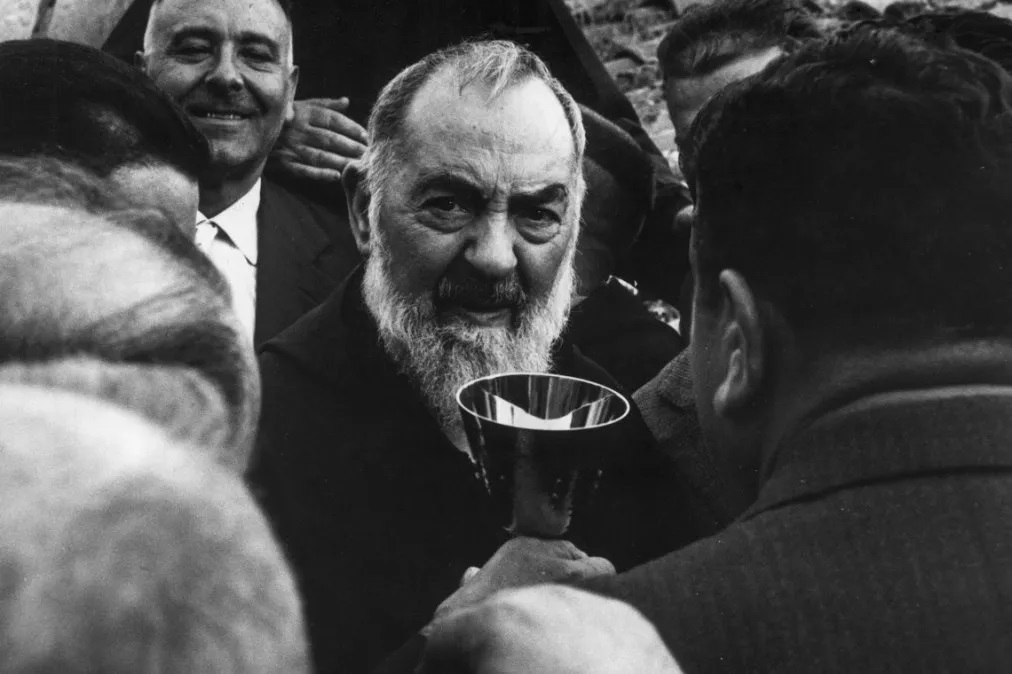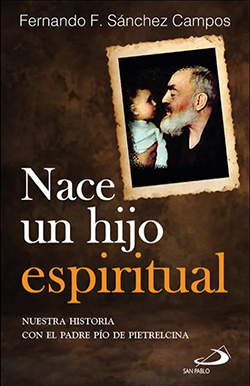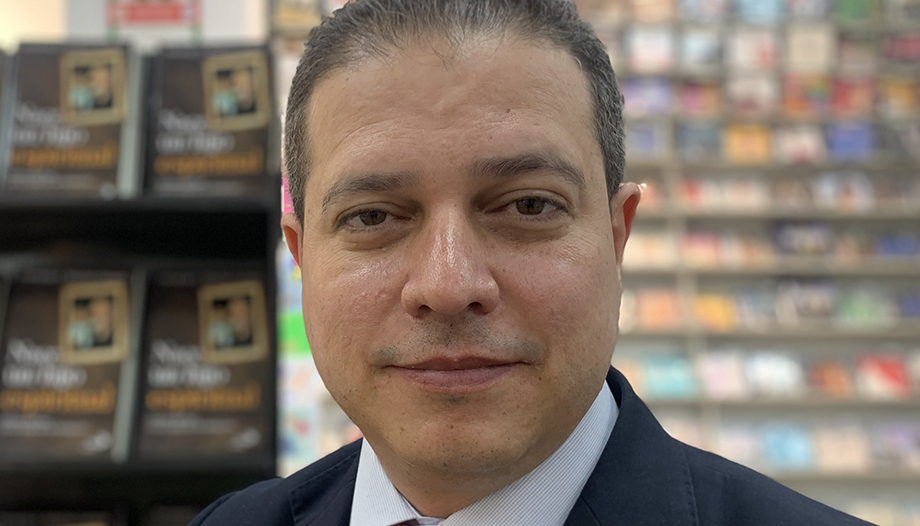Fernando Felipe Sánchez Campos is the Rector of the Catholic University of Costa Rica. He has been a member of the Costa Rican Legislative Assembly, Costa Rican Ambassador to the Holy See and Permanent Representative to the United Nations in Rome.
But, above all, this Catholic of firm convictions, father of two children and husband of Milagro, is a friend of Padre Pio.
Like friendship defines his relationship with the saint of Pieltrecina who, as he recounts in "A spiritual son is born.", edited by St. Paul, was born after various signs that led him to see the hand of God, through the intercession of this saint, at various serious moments in his family.
The healing of his son Fernando, who was born with a severe heart condition, a highly responsive atrial flutter, was the definitive call for his parents to "connect the dots" and Padre Pio became part of this family.
Fernando Felipe Sanchez Campos spoke to Omnes about his book, his family and Padre Pio's assignment for this Costa Rican.
How did you come to this relationship with Padre Pio?
- Even before I really knew Padre Pio, there were signs that at first attracted my attention, because they were very strong. I remember very well a dream in which I spoke with a Capuchin friar with a beard, but at that time I did not identify him as Padre Pio, because I did not know him, and I did not even know Italian. Later I was given a book of Padre Pio and I recognized that friar, but I didn't read it then, it stayed on the shelf.
The strongest call came when my wife became pregnant. At that time I was a member of the Costa Rican Parliament. She came to tell me and I proposed to go to the first church we could find to bless the womb. I didn't want it to be our parish because, after 7 years of waiting, I didn't want a lot of "publicity". Well, that first church we found was dedicated to Padre Pio. The pastor, after blessing the womb in front of the Blessed Sacrament, encouraged us to ask for the intercession of the patron saint of the parish. I said yes - without knowing who he was talking about - and it turned out to be Padre Pio.
It was then that I connected everything: the dream, the book... "It seems that this saint wants something with me", I thought... and I realized that I had not been listening well. That's when the study of his life began.
What strikes you most about Padre Pio's life?
- When you learn about Padre Pio's life and all the charisms he received - which I believe he had practically all of them - it is very striking and interesting. But I think that stronger than all that is his testimony. I believe that the saints "choose us", that the Lord sends us the saint we need for each one of us. If he sent me this super saint to be my guide, God expects something by sending him to me. This reality challenges you, because we are talking about a life dedicated to holiness, of giving oneself to others, of being a witness, of living holiness in spite of trials.
Benedict XVI himself told me when I presented him with my credentials and asked to meet the "miracle" child, he told me to choose a saint - I had already chosen one - so that I could pray and see that everything that happens to you is nothing compared to what they lived through. Of course he was right.
How do you define your relationship with Padre Pio?
- He is my friend. I see him as my personal friend. I talk to him all the time and he constantly keeps giving me signs. Signs that I understand better and better, especially when something disturbs or disturbs me or I have asked him to intercede. For example, I always find somewhere a number 23 (Padre Pio died on September 23, 1968).
I think you have to have an open heart to understand these signs, because the Lord and the saints are constantly speaking to us. On other occasions, it has happened to me that I have had doubts about whether what I was doing was going the right way, what do I know... I arrived at the hotel and room 23!
What's more, it has even happened to me that, in a hard moment of tribulation, someone reminds me of something that I wrote in the book and that I no longer remembered.
The whole family has this relationship of friendship with Padre Pio. Fernando's son, from a very young age, sees him as someone very close to him. Even when he was only four years old, at school in Italy, they spoke to him one day about the saints and he wanted to tell his "story" with Padre Pio.
And her daughter's name is María Pía
- Yes, exactly. The story of his name was very nice, because it was born very naturally. When the whole problem with Fernando and Padre Pio's intercession happened, I wrote what happened, not to publish it but to get it off my chest.
When he was healed, we went to San Giovanni Rotondo to fulfill the promise we had made. I remember that I wanted to tell the guardian of the convent what had happened. Since I could not speak without getting emotional, I had the whole story written down.
I lined up at the confessional and when it was my turn I told him "Fray Carlos, the first thing I have to confess is that I am not here to confess but to give you this" (the story). I gave it to him and the next day he took us to Pieltrecina and told me that he wanted to meet Fernando's son, who was then very young, and publish an extract of the story in the Voice of Padre Piothe sanctuary's magazine.
When we returned years later, my wife was pregnant for the second time. No one knew and we wanted him to make the announcement. Fray Carlos agreed, but asked me "What is the child going to be called?". We had not yet decided on the name and he said, "Well, that's easy! She is going to be called Maria Pia". Somehow it was Friar Carlo Maria Laborde who chose my daughter's name. We agreed immediately.

In the book, you include numerous quotes from Padre Pio. Which one touched your heart the most?
-Several. There is one, very well known: "Pray, wait and don't worry." that I always keep in mind. Another one that I remember a lot is "Trials are the jewels that hang around the necks of the souls that God loves most." There are many phrases that, at one time or another, have deeply touched my heart. I also like very much the sense of humor that Padre Pio had. Although it has been said that he was "angry", it was because of the constant pain that the stigmata caused him and that many people "literally threw themselves at him". But he had a very good sense of humor and did not take himself too seriously. He took what he did very seriously, but not himself. I think that testimony is very valuable.
I remember a very nice anecdote, which I tell in detail in the book. When I presented my credentials to Benedict XVI, I had about 10 minutes to talk to the Pope. I informed him of the "official" matters and almost at the end I said "Holy Father, now I want to talk to you about me". The Pope said yes, asked the others to leave and we were able to talk about many things for more than half an hour. In that conversation, Benedict XVI asked me to see the "miracle child". We went out and after he blessed us all: staff, family and spent a few minutes with us, when we left, Fernando, who was three years old at the time, told me with a start that he had not said goodbye to the Pope, he let go of my hand and ran to the Pope's office, a photographer from L'Osservatore Romano came running after him. A few minutes later they came out and told us that he had gone to say goodbye to the Pope. This photographer took some beautiful pictures of them, which we have as a souvenir. From that day on, Benedict XVI always asked me about "the little ambassador".
You say that the saint sought you out, but what assignment does Padre Pio give you?
- At the age of 50, I am now at a point in my life where I am looking back. I have realized that, for some reason, I have had to assume great responsibilities at a young age and at critical moments for each institution I have worked for.
I was a deputy of the Republic of Costa Rica at the age of 32. A few years later I was Ambassador to the Holy See (the Vatican), to the Sovereign Order of Malta, and Permanent Representative to the United Nations agencies in Rome. In fact, I remember the first time we arrived at St. Peter's Basilica for an event. My wife and I sat in the ambassadors' place and some guards told us "Come on, take your picture and get out because they are going to throw you out" (laughs).
When we arrived in Rome, the embassy was in tatters. It was an embassy without influence. There was not a single cooperation agreement in more than 165 years of diplomatic representation. We began to work and, in those years, agreements were signed, for example, with the hospital of San Giovanni Rotondo, the Virgin of the Angels was enthroned in the pontifical parish of Saint Anne and we experienced the canonization of Saint John Paul II, which was possible thanks to the miracle of the healing of Floribeth Mora Diaz, a Costa Rican woman. We became one of the busiest embassies in Rome.
After this stage, I was entrusted with the Catholic University of Costa Rica. When I arrived I was in a complicated situation and we have been solving various issues.
Somehow, I believe that the Lord leads me to places of responsibility so that I seek to restore them. And I go with the basis in prayer and in working very hard to get things going. I know that without the spiritual strength I would not have taken on any of the three, because it was not the right time, but the Lord does not choose those who are qualified, but rather he qualifies those he calls.










